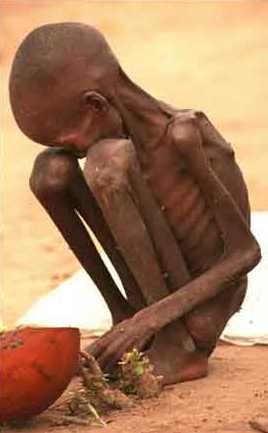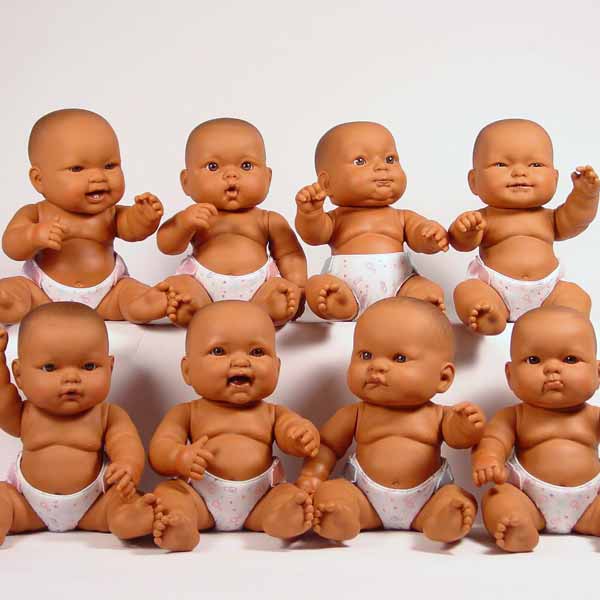 How many times have you ever looked at a clothing tag or turned over a product and seen "MADE IN CHINA" stamped onto it? Thirty-six percent of Chinese exports are imported into the United States. That added up to 337,789.8 million dollars of goods imported into the US from China in 2008 alone (source). In this article, a family tries to go a week without using a single product that was made in China. In the end they are very unsuccessful, because they didn't even realize so many kitchen items they use on a regular basis were made in China, such as Ziplock bags and Kleenex. When we studied The Jungle, we learned that labor regulations were created to control the terrible working conditions in Packing town. Because of laws such as minimum wage, labor in the United States has become much more costly, causing industrial labor to move overseas. China is the most prominent example of this. Products can be made there for significantly less than they can be made in the United States. However, this labor is cheaper because American companies such as Nike and Walmart "systematically violate the most fundamental human and worker rights, while paying below subsistence wages" (source). The factories moved overseas, and so have the poor labor conditions and sub-par wages. in a Walmart factory that makes handbags in China, "1,000 workers were being held under conditions of indentured servitude, forced to work 12 to 14 hours a day, seven days a week, with only one day off a month, while earning an average of 3 cents an hour" (source). Is it worth causing lives of poverty for Chinese laborers so that we may live a life of affluence in the US, filled with Chinese made material goods?
How many times have you ever looked at a clothing tag or turned over a product and seen "MADE IN CHINA" stamped onto it? Thirty-six percent of Chinese exports are imported into the United States. That added up to 337,789.8 million dollars of goods imported into the US from China in 2008 alone (source). In this article, a family tries to go a week without using a single product that was made in China. In the end they are very unsuccessful, because they didn't even realize so many kitchen items they use on a regular basis were made in China, such as Ziplock bags and Kleenex. When we studied The Jungle, we learned that labor regulations were created to control the terrible working conditions in Packing town. Because of laws such as minimum wage, labor in the United States has become much more costly, causing industrial labor to move overseas. China is the most prominent example of this. Products can be made there for significantly less than they can be made in the United States. However, this labor is cheaper because American companies such as Nike and Walmart "systematically violate the most fundamental human and worker rights, while paying below subsistence wages" (source). The factories moved overseas, and so have the poor labor conditions and sub-par wages. in a Walmart factory that makes handbags in China, "1,000 workers were being held under conditions of indentured servitude, forced to work 12 to 14 hours a day, seven days a week, with only one day off a month, while earning an average of 3 cents an hour" (source). Is it worth causing lives of poverty for Chinese laborers so that we may live a life of affluence in the US, filled with Chinese made material goods?
Saturday, February 28, 2009
Where has all the labor gone?
 How many times have you ever looked at a clothing tag or turned over a product and seen "MADE IN CHINA" stamped onto it? Thirty-six percent of Chinese exports are imported into the United States. That added up to 337,789.8 million dollars of goods imported into the US from China in 2008 alone (source). In this article, a family tries to go a week without using a single product that was made in China. In the end they are very unsuccessful, because they didn't even realize so many kitchen items they use on a regular basis were made in China, such as Ziplock bags and Kleenex. When we studied The Jungle, we learned that labor regulations were created to control the terrible working conditions in Packing town. Because of laws such as minimum wage, labor in the United States has become much more costly, causing industrial labor to move overseas. China is the most prominent example of this. Products can be made there for significantly less than they can be made in the United States. However, this labor is cheaper because American companies such as Nike and Walmart "systematically violate the most fundamental human and worker rights, while paying below subsistence wages" (source). The factories moved overseas, and so have the poor labor conditions and sub-par wages. in a Walmart factory that makes handbags in China, "1,000 workers were being held under conditions of indentured servitude, forced to work 12 to 14 hours a day, seven days a week, with only one day off a month, while earning an average of 3 cents an hour" (source). Is it worth causing lives of poverty for Chinese laborers so that we may live a life of affluence in the US, filled with Chinese made material goods?
How many times have you ever looked at a clothing tag or turned over a product and seen "MADE IN CHINA" stamped onto it? Thirty-six percent of Chinese exports are imported into the United States. That added up to 337,789.8 million dollars of goods imported into the US from China in 2008 alone (source). In this article, a family tries to go a week without using a single product that was made in China. In the end they are very unsuccessful, because they didn't even realize so many kitchen items they use on a regular basis were made in China, such as Ziplock bags and Kleenex. When we studied The Jungle, we learned that labor regulations were created to control the terrible working conditions in Packing town. Because of laws such as minimum wage, labor in the United States has become much more costly, causing industrial labor to move overseas. China is the most prominent example of this. Products can be made there for significantly less than they can be made in the United States. However, this labor is cheaper because American companies such as Nike and Walmart "systematically violate the most fundamental human and worker rights, while paying below subsistence wages" (source). The factories moved overseas, and so have the poor labor conditions and sub-par wages. in a Walmart factory that makes handbags in China, "1,000 workers were being held under conditions of indentured servitude, forced to work 12 to 14 hours a day, seven days a week, with only one day off a month, while earning an average of 3 cents an hour" (source). Is it worth causing lives of poverty for Chinese laborers so that we may live a life of affluence in the US, filled with Chinese made material goods?
Wednesday, February 18, 2009
Poverty in the US

When I think of poverty, I think of the commercials for world hunger (such as this one) where there are starving children stumbling through the dusty savannah, looking like skeletons because they are so skinny. Throughout these commercials, statistics flash across the screen, stating fact such as "one-third of the world is well-fed, another third is hungry, and the remainder is starving" and "Every year 15 million children die of hunger". However, our discussion in class today of "Susie American" and her "Mortgage Scenario" made me realize that with our current economic crisis, a significant number of Americans in the same situation as "Susie" will be falling below the U.S. poverty line. I was surprised to find that currently one in six children in the U.S. lives below the poverty line. The Stimulus Bill just signed by President Obama has given hope to many American citizens facing financial challenges and the possibility of falling below the poverty line. In a transcript of his remarks after signing the Stimulus Bill in Denver, Colorado, President Obama stated: "it's a plan that rewards responsibility, lifting 2 million Americans from poverty by ensuring that anyone who works hard does not have to raise a child below the poverty line. As a whole, this plan will help poor and working Americans pull themselves into the middle class in a way we haven't seen in nearly 50 years." This bill will hopefully help all those who need financial support.
Monday, February 16, 2009
Agency and Oppression in Sri Lanka

Sri Lanka, an island country about twenty miles off the southern India, has been stricken for the last twenty six with off-and-on civil war between the government and separatist militant organization, the Liberation Tigers of Tamil Eelam (LTTE). The LTTE is now forcibly recruiting children as young as fourteen years old to join their forces. They are shooting and killing those trying to flee Sri Lanka's war, which is now one of the longest-running wars in Asia. According to the United Nations, "there were also reports civilians had been killed in fighting inside a newly demarcated no-fire zone on the Indian Ocean island's northeastern coast" (Article). Peace is actively trying to be established in Sri Lanka by the UN, but the LTTE is not responding, continuing to violate the UN's cease fire declerations. The number of civilian deaths since this civil war started in 1983 is mounting. Ron Redmond, a spokesman for the UN High Commissioner for Refugees, said, “We are outraged by the unnecessary loss of hundreds of lives and the continued suffering of innocent people inside the LTTE-controlled areas" (Article 2).
The conflict in Sri Lanka is a classic example of angency and oppression. The Agency that the LTTE pocesses is being used to oppress the civilians of Sri Lanka. The civilians are being oppressed by having their homes destroyed and their friends and relatives innocently killed because of this destructive, drawn-out war. What will it take to stop this case of agency and oppression?
Friday, February 6, 2009
Baby Bonanza!

An article from the New York Times that questions the high rate of multiple birth resulting from the lacking laws surrounding fertility clinics reminded me of my Junior Theme topic. I read Sinclair's The Jungle and Harr's A Civil Action, and my topic relates to the laws that were created to regulate their respective industries' lacking standards that were exposed in the books by each author. This article describes that "the United States has no laws to enforce those guidelines" that the American Society for Reproductive for Medicine for the in vitro fertility procedure. The invitro "treatment involves removing eggs from a woman’s ovaries, combining them with sperm in a laboratory, and implanting the resulting embryos in the woman’s uterus. (In some cases the eggs come from a donor.) The number of embryos implanted is often a judgment call and can make a big difference in a pregnancy’s outcome". Recently, some fertility clincs have been implanting up to six embryos in a single birth mother. Although this may increase the chances of a birth, it also inceases the chances of multiple births, especially when the the embryos split, or multiple embyros go through. Recently, a woman who already had six children had an invitro implant of six embryos. All six went through, and two split, resulting in the 33 year old woman having octuplets. Now she has fourteen children, all born through in vitro. As stated in the article, "the United States had retained a laissez-faire stance toward in vitro procedures, instead of regulating the process like some other countries do." Almost one-third of invitro births result in twins or more, and the numberof procedures being done has doubled in the last ten years. With these statisics and the health hazards that multiple births bear for the babies and the mother, maybe the U.S. goverment will have to step up and create regulating laws.
Wednesday, February 4, 2009
Romanticizing the Lives of Celebrities

When I was hanging out with my cousin the other day, she was reading the latest issue of Us Weekly. She was enthralled with the magazine, and kept commenting on the latest celebrity gossip, saying things like: "Can you believe he did that?" and "Did you know that he was with her?" When I asked her how she was able to keep up with the lives of celebrities so well, she told me about a website she often reads, perezhilton.com. The byline for the website is "Celebrity blog site covering news and rumors of Hollywood stars" and it is updated very frequently with the latest gossip. I found this to be a good example of something that Americans romanticize: the lives of celebrities and the gossip and rumors that surround them. Television shows such Cribs on MTV make celebrity life look like one of endless luxury, showing tours of the stars’ homes and highlighting their most lavish processions such as several very expensive cars. Shows such as this leave many Americans wishing they could become rich and famous and live in a big, beautiful house. Stations such as MTV, VH1, and E! are devoted to exposing the lives of Hollywood stars. Americans romanticize the celebrity lifestyle, making it seem much better than it actually is. Magazines such as Us Weekly, People, and Star focus on what each celebrity is dong with their lives, who they are dating, where their last vacation was, and what they last wore on the red carpet. They make it seem that the lives of celebrities are much more important than the lives of the average American, thus again romanticizing the celebrities lives to be better than their own. They also cause an obsession for some people that has resulted in an industry devoted to just following the celebrities lives and publishing them in the forms of magazines and television programs. Instead of worrying about their own lives and the problems they face, many American indulge in following the lives of overly romanticized stars. In reality, we are all human and therefore why is it so important to follow the lives of people we do not know and most likely will never meet?
Subscribe to:
Posts (Atom)

